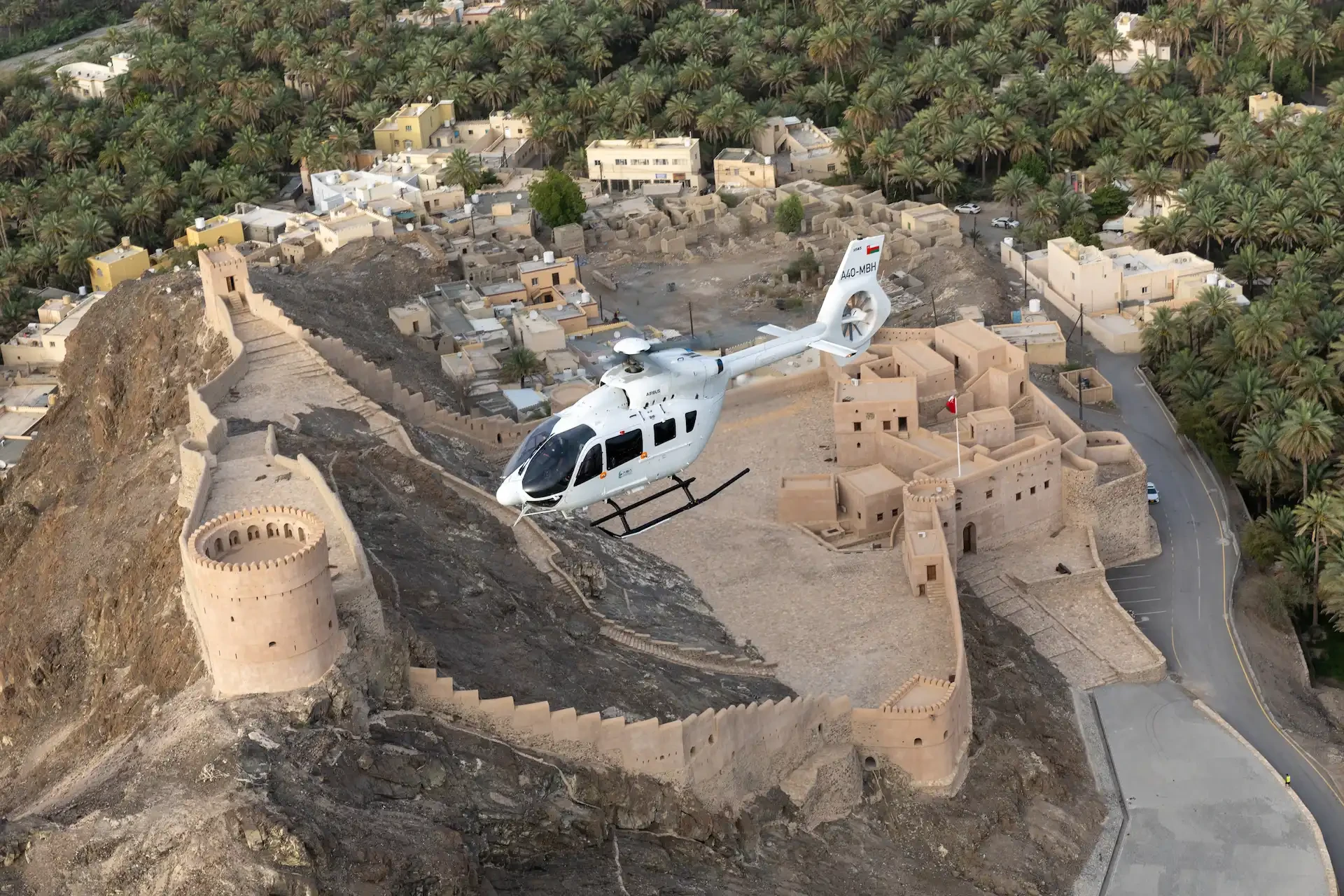Until very recently, no commercial helicopter operators existed in the Sultanate of Oman. The owners of Al Sharqiya Aviation, however were among several groups seeking to be the first. Their successful bid on a government tender made them Oman’s first and only commercial helicopter operation, as Ned Dawson reports.
Beginnings
Although a number of operators have previously sought to establish civil helicopter operations in Oman, none had succeeded. Insufficient aviation environment infrastructure, such as SAR facilities and coverage, was cited as a major factor. A government decision, driven largely by Oman’s civil aviation department, to let a tender for a new civil operator gave Al Sharqiya Aviation (ASA) the opportunity. Following its successful bid, the Omani owned and run company is now Oman’s sole civil helicopter operator, while the ROP (Royal Oman Police) and the Royal Air Force provide paramilitary/parapublic helicopter operations. A base in Muscat was selected early on, about 40 kilometers from the old city and just over a mile from Muscat International Airport, on land provided by the OMRAN owned exhibition center. This location fosters a useful collaboration with the government-owned agency that focuses on tourism and economic development. From there, the company operates its Airbus H125 and H145-D3 aircraft, but also has access to an Embraer Legacy 650 business jet operated by Empire Aviation – providing seamless travel for customers wanting both helicopters and fixed wing if required.
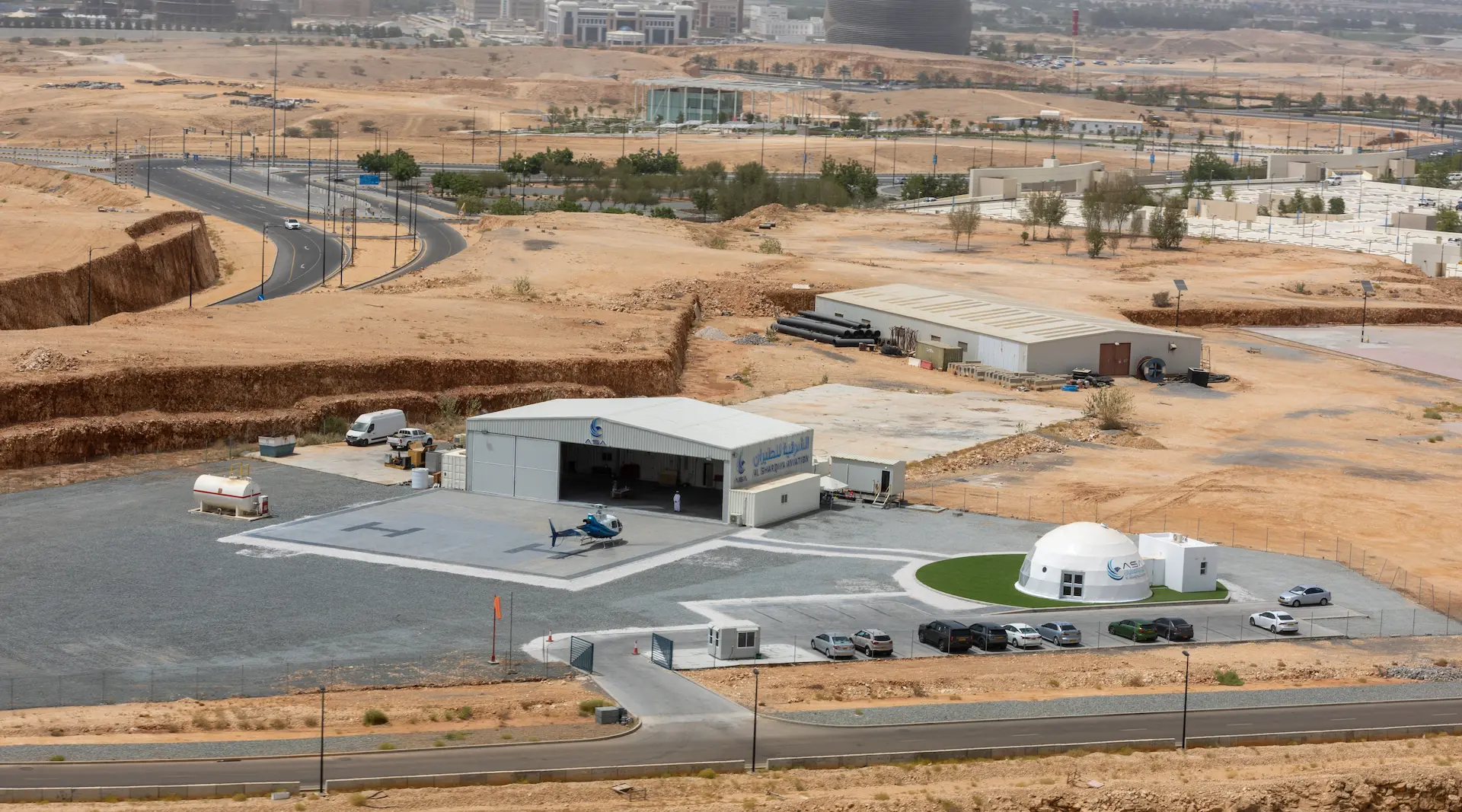
The genesis of ASA was the establishment of a team in 2017, to start the process of creating a viable commercial operation; the brainchild of Omani billionaire Mohammed Al Barwani, whose holdings began as a small, family-owned business that has grown to include interests in shipbuilding, oil and gas, mining, tourism, aviation and philanthropy. By 2019 the post-holder team was complete, with positions including the accountable general manager, the safety manager, the head of airworthiness, the security manager and Chief Pilot Abdullah Al Ghazali who manages flight operations and training.
The next major step forward was the attainment of the company’s AOC (Air Operator’s Certificate) in 2020, although the timing of the process was a little unfortunate as global events created a major hurdle. Al Ghazali explained, “We got the AOC at the end of January 2020 and by that March we had the full closure due to Covid. Everything was grounded and for a company that was brand new and just starting to establish itself, that was our biggest challenge.” He admitted that almost every aspect of establishing the company had been challenging as the aim was always to have an entirely Omani operation, even down to writing all their own operations manuals, rather than relying on an external provider or consultant. “Everything we did was a first and we had to deal with a civil aviation authority that had only worked with Airlines and Government owned AOC holders (ROP and Royal Flight) prior to this. So, when we came on the scene, we were the guinea-pig and all eyes were on us.” The unusual circumstances explain the relatively slow progression, but Al Ghazali commented that the intent of all parties had been good and that great support had been given throughout the process. A manager for the independent CAR Part-145 maintenance operation was a subsequent and recent addition to the post-holder team and it is intended that the offshoot maintenance operation will become a full-fledged commercial MRO in the future.
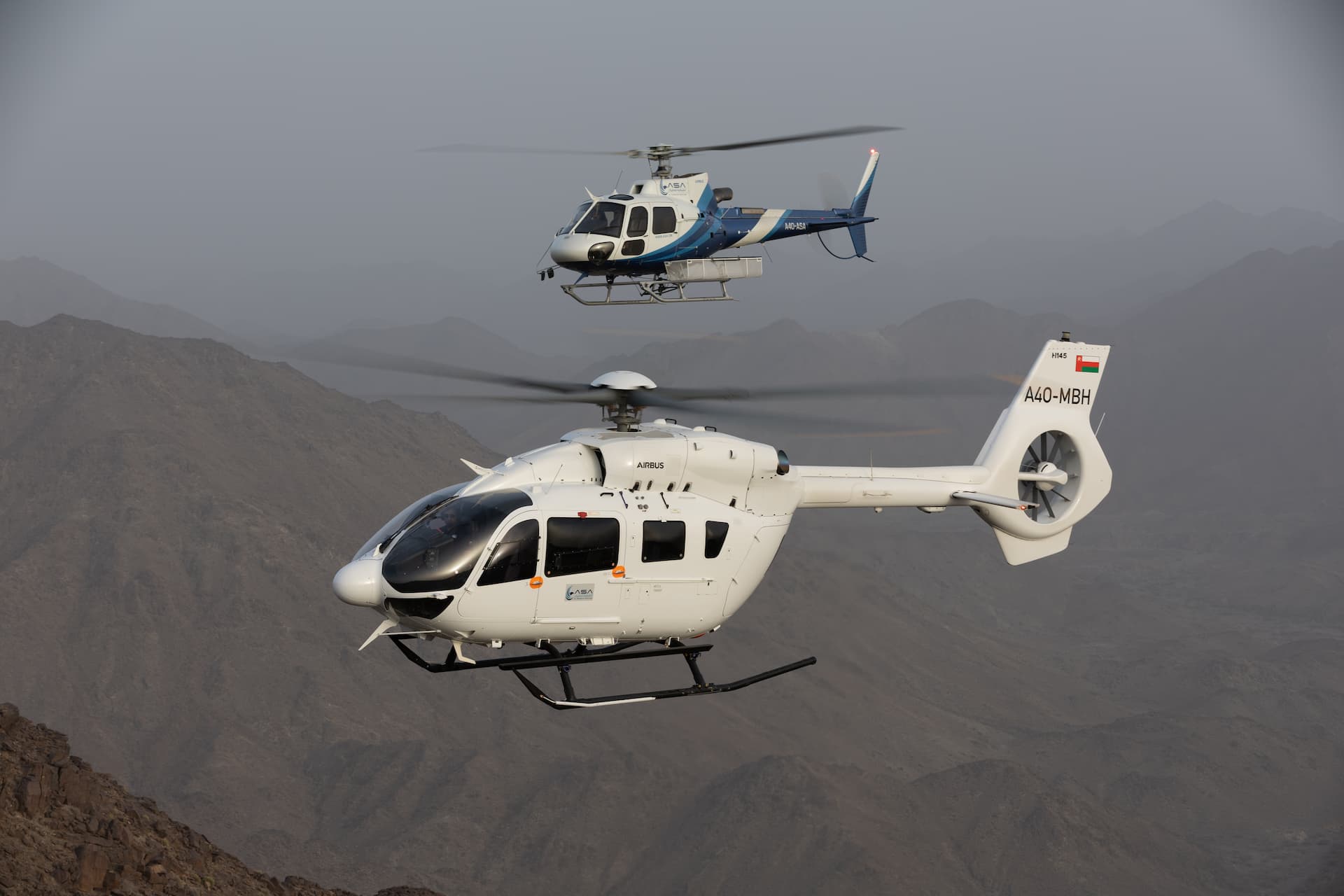
Growing
As a small company, ASA’s resources were and are limited so the development of the Muscat base has been a gradual, modular process. The hangar and apron came first, followed by the passenger facilities and all constructions are temporary, with plans for their replacement with permanent buildings as the company develops. “What we want here in the long-term is very different, with a full-on terminal system heliport but we have to wait for the right time to invest in that because it will be very expensive to establish,” Al Ghazali explained. He elaborated that it is foreseen that the facility will eventually become a fully approved official heliport, available to visiting aircraft.
Helicopter Choice
Several factors led to the choice of Airbus aircraft for the ASA fleet. Al Ghazali started with the company after flying for the Royal flight, with experience in its AS332, H225 and AS550 (H125M) Fennec machines. The AS550 is based on the civil AS350 (H125) ‘Squirrel’ and AS355 platforms and as Al Ghazali was the company’s only active pilot in its earliest days, it made sense to acquire an aircraft that offered familiarity and would entail little conversion training. Training was provided by Airbus at its Dallas training facility and Al Ghazali stated that a longstanding relationship with Airbus from his time in the Royal flight made the process very simple and familiar. He considers the manufacturer to be very supportive and to offer a product line that is well proven in Oman’s tough operating conditions.
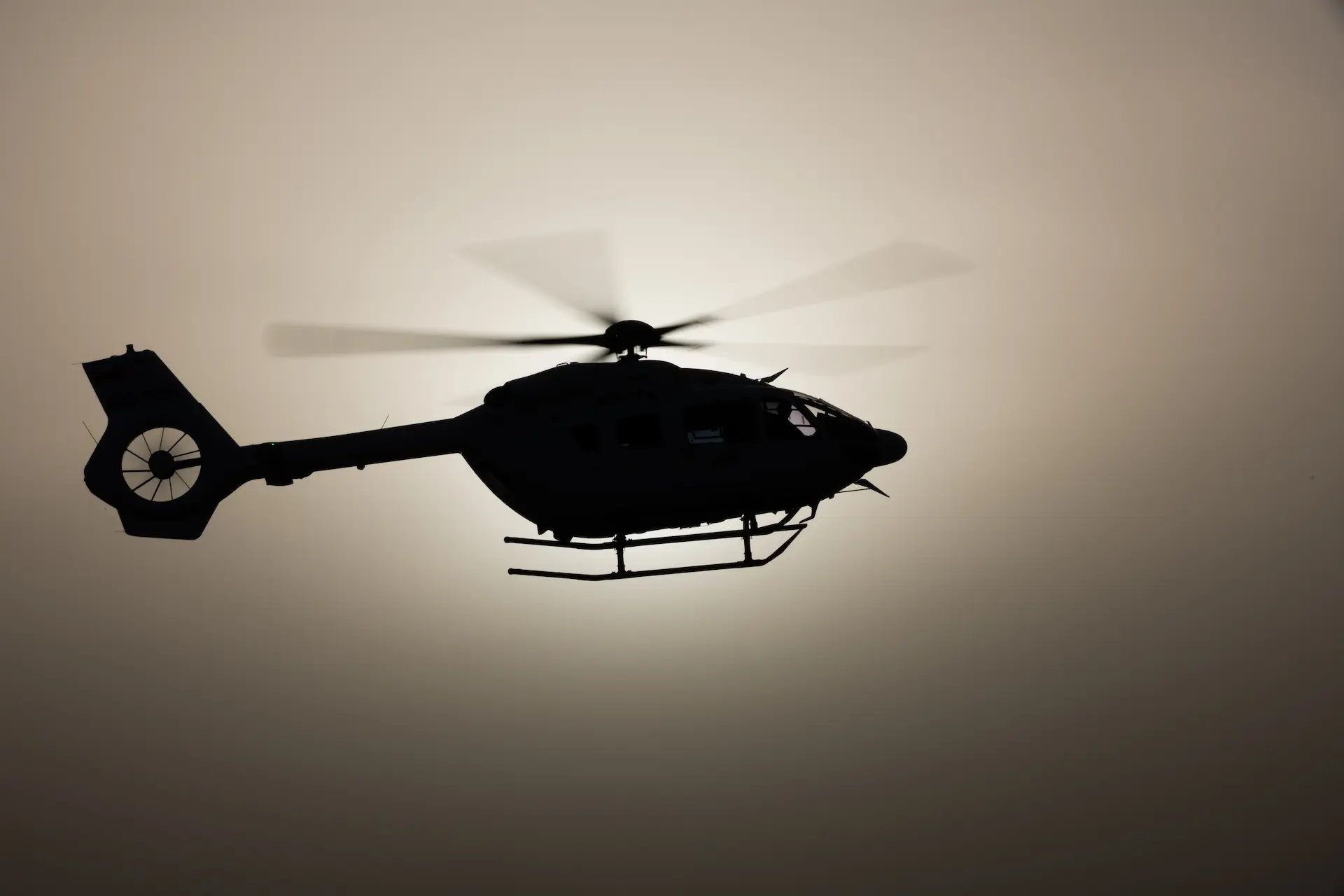
Also, operationally, it made sense because the AS350 series is well known worldwide as a highly capable performer in a very wide range of mission roles and climatic environments. “It’s the best in its class for this, with the excellent hot and high performance that we need here. We wanted to be able to carry out any work that came our way, instead of just focusing on one market segment, so the H125’s genuine multi-role capability was crucial for us. We also have a good relationship with Airbus, who stay in contact and generally made it all easier.” The first aircraft was a flagship and an important part of the image the new company wanted to project so it was important to not just get the right type, but also to go with a new or virtually new example. After some searching, an almost new airframe with only 70 hours logged was sourced out of Africa and was immediately adorned with the company’s paint-scheme, initially on a dry-lease that included maintenance.
Including Al Ghazali, four Omani pilots carry out the flying duties. General manager Captain Najeeb Al Attar has a background in police aviation and commanded the ROP air wing before leaving the police. He then flew for Oman’s Royal flight, where he became accountable manager of the helicopter fleet and therefore also Al Ghazali’s boss there. Captain Said Al Hajri flew with the ROP air wing and like Al Attar, qualified as an instructor and examiner while there. Captain Riyad Al Shueili, youngest of the four, has an extensive Air Force background and attained the position of base commander. He came to ASA after working for the Royal flight with Al Ghazali and Al Attar. “We are blessed that the team we have put together comes from not only a disciplined background, but one that was the most active in helicopter aviation in Oman, with more than 100 years rotary-wing experience and around 16,000 flight hours between us and experience in all aspects of helicopter aviation,” Al Ghazali observed. “In Oman we don’t tend to log a large number of flight hours because we don’t fly offshore and don’t fly very long sectors. However, every hour flying here is spent doing something difficult or in challenging conditions. We have hot and high, mountainous terrain so every hour flown gives a wealth of experience.”
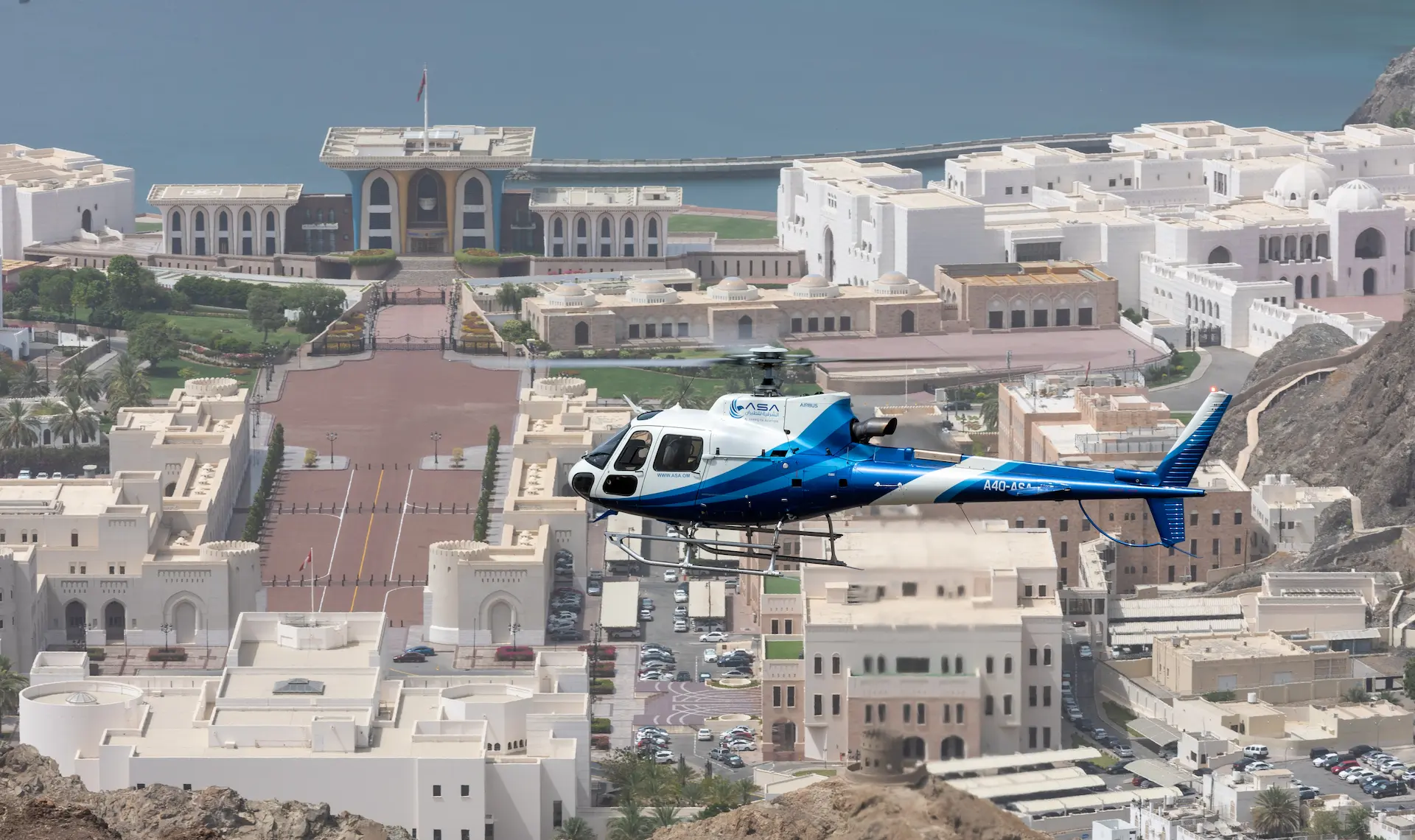
There has historically been no civil flight training available in Oman and although ASA does not offer flight training at the moment, it is envisaged that such a service may well be added to its repertoire in the future. Unlike the other pilots, Al Ghazali first started flying in the civil sector abroad after undertaking academic studies in the UK and he commented that his time spent flying in New Zealand was a highlight of his career. When he heard of the start-up of ASA, he immediately applied to join the fledgling enterprise, recalling, “I was the first to come out and start with this company because I wanted to be part of it, part of making history in Oman.” In those first days maintenance was contracted out and Al Ghazali explained that it had been extremely difficult to hire engineers. “There are mechanics in Oman, but it was very hard to entice someone away from a secure position in a state-owned operation to risk joining a brand new company.” As the company became established and better-known, the situation eased and although the ex-pat Part-145 maintenance manager came to ASA from the South African company that previously provided the contract maintenance, three Omani apprentice mechanics have now completed the academic component and are engaged in the practical elements of their training. The Airworthiness and Ground op’s manager is Thanasis Karampelas, a highly experienced engineer from Greece who is qualified on all ASA aircraft, all AS350 series variants and a wide variety of Agusta and Bell types.
Commercial Operations
ASA’s commercial flying operation aims to serve any client, contracted or ‘walk-in’ and Al Ghazali described the current workload as variable, saying, “Because we are an ad-hoc service, it is very seasonal. We are now in the summer season so our flying is fairly consistent and predominantly for contract customers such as the telecom industry. We are usually busier during our winter period from November through to about April, when it’s cooler and most of the tourists come through.” He commented that a major surprise had been the proportion of tour customers that were Omanis, taking advantage of the hitherto unobtainable experience of seeing their cities and country from the air. “Since opening, up to around ninety percent of our tour clients have been Omani and we didn’t forecast that. That proved to be incredibly fortunate because that local market sustained us when Covid shut everything else down.”
Utility work commenced from day one and Al Ghazali pointed out that a background in state-owned aviation had shown that there was a large amount of helicopter utility work available in Oman. It seemed inevitable that much aerial work carried out by the ROP, Royal flight and Royal Air Force of Oman (RAFO) would become accessible to a private operation once such a service was offered and Al Ghazali remarked, “Those state-owned services were effectively compelled to do the work because there was no other option. They didn’t do it by choice, as it wasn’t conducted for revenue and it ate up their resources for no real benefit.” Proving that point, almost immediately after opening for business, ASA obtained contracts with the two major Omani telecom companies, followed by contracts with several government ministries. “That became our main source of consistent revenue so we weren’t reliant on tour flights to survive. Tourism is still very important to us because we want to be highly visible and it keeps us in touch with our market, appearing in peoples videos, tweets and so on. Otherwise you have to spend millions in promoting yourself.”
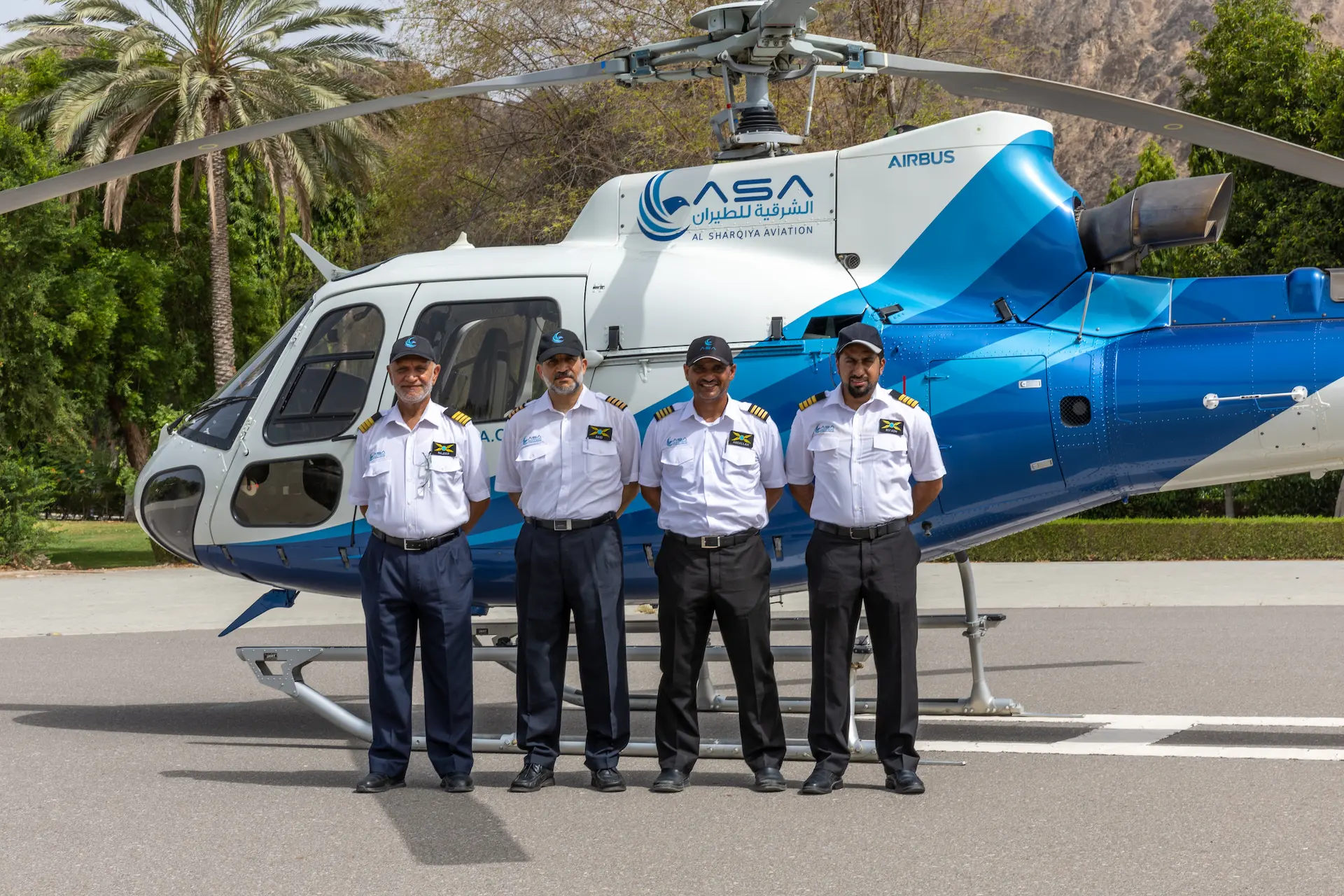
“We didn’t think that people would immediately buy into the concept of renting a helicopter and choosing their own route, so we started out with a set tour. That let us determine a fixed flight time and price-per-seat. Fortunately, we could cover most of the most scenic portions of Muscat with a single, large, oval flightpath,” Al Ghazali related. He recalled that the operation first commenced from the airport as the base had yet to be built, with the aircraft relocated each day to one of the resorts, from where the tour flights then departed. “We started with a twenty minute tour and that was twenty minutes actual air-time. We’ve all flown with other operators who charge from start-up to shut-down but we didn’t want to play that game. If the customer is paying for a twenty minute flight, they expect twenty minutes in the air.” That first tour proved popular, including such locations as the old Muscat city and presidential palace, coastal scenery and a very scenic bay popular for recreational water sports, all locations typically visited by the ground-bound coach tours. Soon after, an extended tour was offered, flying another ten minutes to add the opera house and grand mosque to the itinerary.
Although ASA sells tour flights and does not sell individual seats, they do advise customers on the cost per-seat as this encourages clients to get other family members and friends to share in the experience, with overwhelmingly positive customer feedback for the tours which typically average out at around OMR75-85 (US$195-220) per person. ASA also offers a discounted rate for exclusive hires, to encourage families and clients wishing to hire the helicopter by themselves. As the programmed tours became popular, customers began to enquire about individual, or bespoke tours and ASA encourages this, pricing the aircraft on a per-hour basis and working with customers to give them the itinerary and route they desire. Business then evolved further with growing interest in transfer/VIP type flights, thus generating relationships with some of the finest high-altitude five- and six-star resorts in the region’s mountains.
Utility Work
Utility work so far has largely comprised load lifting with a net or long-line, transporting supplies and conducting maintenance or construction support for the telecom and radio towers. These flights are typically between 3,000ft and 8,500ft but Oman’s climate takes the density altitude anywhere up to 13,000ft. All pilots are experienced in this role though, as it has been a staple in ROP and RAFO missions. The net is preferred for supply runs and is usually short-stropped from the belly hook. Long lining is a better option when placement precision is required and is necessary when the landing site is not the desired point of delivery. ASA flies oil and gas industry missions, both in support of its sister companies and for outside companies as that industry is the core business of the main Al Sharqiya group. While firefighting is not out of the question, there are currently no plans to acquire and routinely train for Bambi-bucket operations, although Al Ghazali did gain such experience during his time in New Zealand. An increase in demand for utility work is already apparent and Al Ghazali observed that the limiting factor is now the size of the fleet. “We can’t do much more than we already are until we get another helicopter,” he said. “We only have the one H125 and our plan is to get one more, along with another H145. With these two aircraft we can cover the market and offer competitive pricing.”
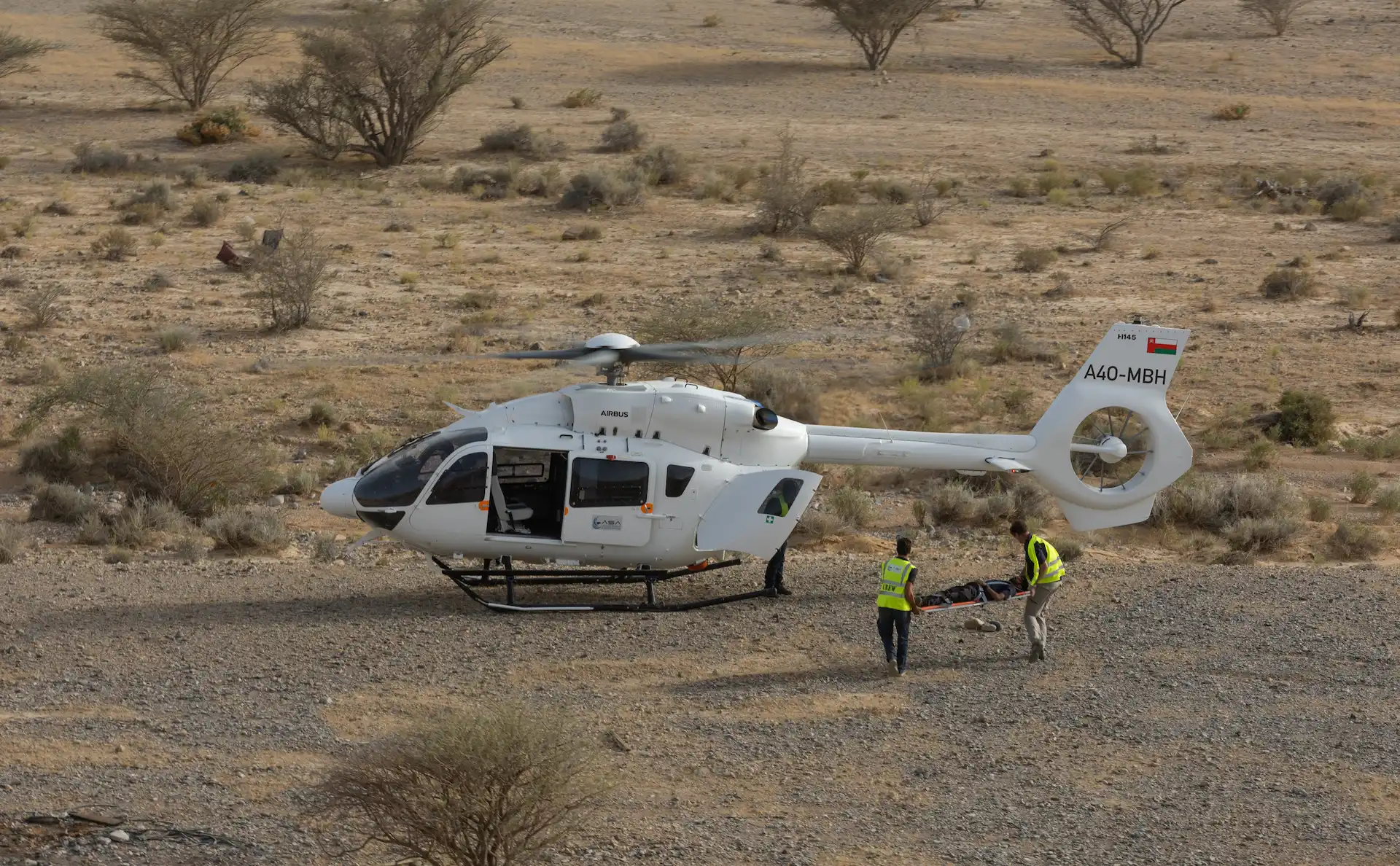
Like almost all turbine-powered helicopters, the ASA machines have an engine start limit of 50oC ambient temperature. The aircraft manual states a gauge accuracy of plus or minus two degrees so ASA errs on the conservative side and limits engine starts to 48o indicated as no spare aircraft are readily available and there is only limited parts availability. Both aircraft are air-conditioned – a necessity in Oman’s climate – and Al Ghazali advised that they made every effort to keep the parked aircraft shaded when possible, or pushed into the hangar.
The company’s H145 is the latest D3 variant and, illustrating its performance, Al Ghazali advised that operations had been flown at density altitudes from sea level up to 11,500ft, with the latter being during a world record-setting attempt on Kuwait’s national day to lay the largest flag (100m) at the highest altitude in history. Al Ghazali explained that the D3’s newness actually created some issues with its suitability for utility work. “Because it’s the latest, we cannot use the certifications for the older D2 model of course. Much of the equipment that is available for the D2 is not yet certified for the D3, and that includes the hook. That is a handicap for us right now but the process is underway and we do believe that Airbus will have certification for the hook very soon.” This all means that the 145 has so far been restricted to passenger transport and the carriage of internal cargo, but it will be utilized in the full range of utility missions once the necessary certifications are in place. It also functions as a medevac response aircraft for several contracting clients that operate in remote areas of Oman, including the UK’s ministry of defence. The UK contract requires the H145 to be exclusively available at all times for either medevac or passenger transport as required, so the medical fit-out can be removed and the passenger configuration reinstated in less than an hour if need be. The requirement for 24hr availability on the H145 makes crewing a challenge and stretches ASA’s current resources to the limit, and Al Ghazali noted that, in time, he would like to see an increase in flight crew staffing as well as a larger fleet.
Growing
Awareness of ASA’s operation is already growing, particularly with external companies noticing its support operations for oil and gas and mining. Omani companies are looking to expand oil and gas operations to offshore rigs in the future and according to Al Ghazali, that is an industry segment that ASA would be keen to enter. Its H145(s) are easily capable of servicing the initial crew transfer role once they are kitted out with the required offshore safety equipment and if sufficient growth and demand develop, other, larger offshore-capable types could be added to the fleet in future. For a new start-up negotiating troubled times ASA has done extremely well and, provided it remains responsive and quick to adapt, its future has the potential to be impressively strong. In Al Ghazali’s words, “Whatever business model we started out with, Covid threw it out the window and we are now in recovery mode for our original plan. What is going to work from here on is us being ready and available to tap into whatever services are required, and see how we grow from there.”
 HOME
HOME


